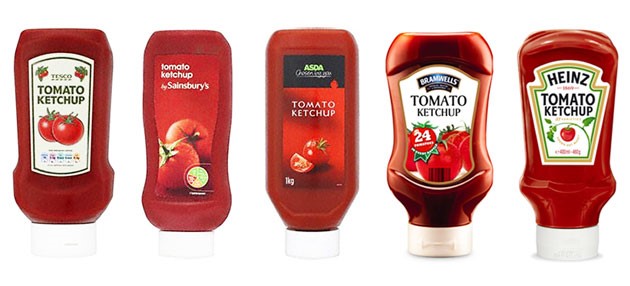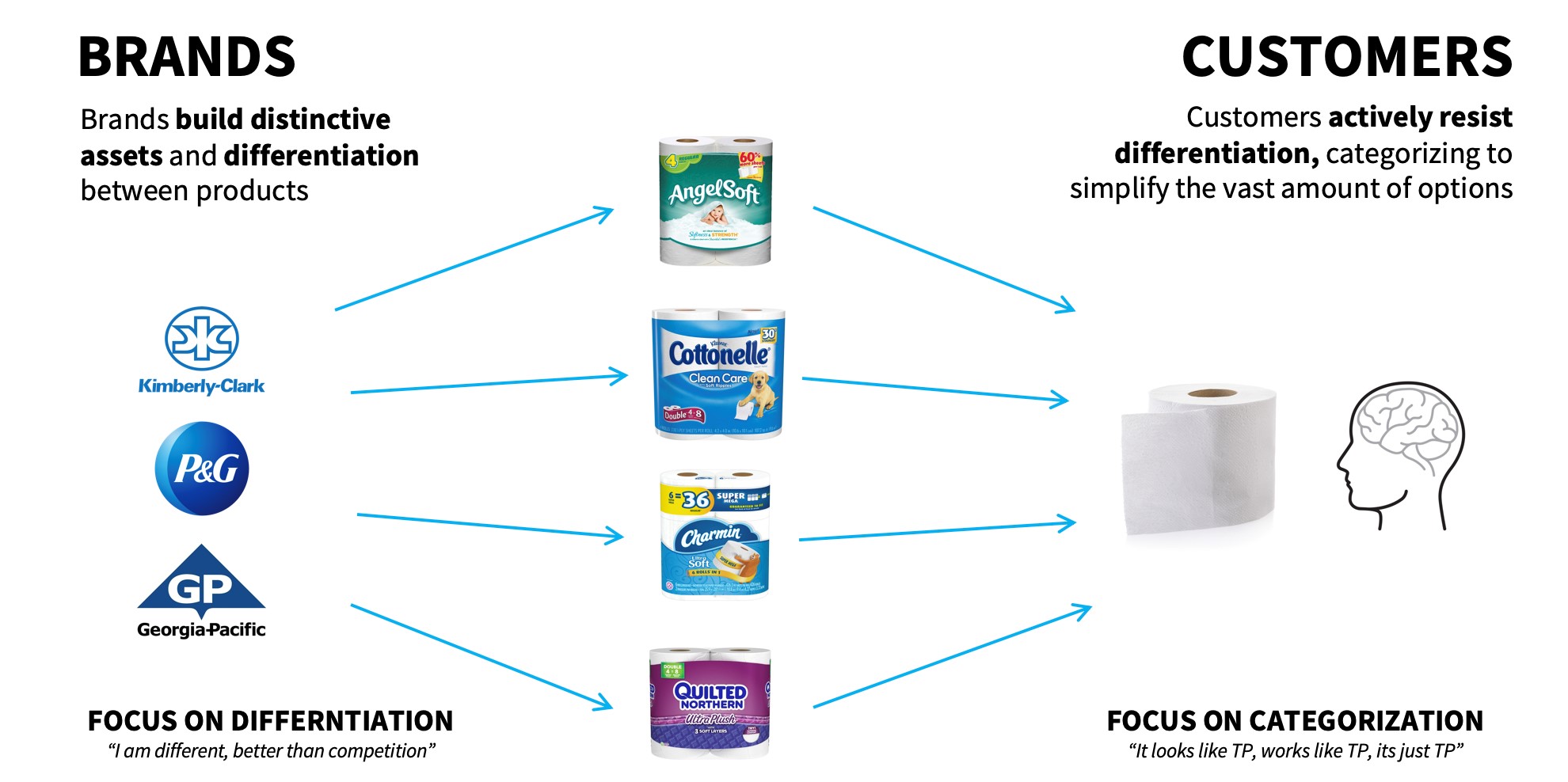PROBLEM: Growth of Private Label & Store Brands
Private label and retail brands are radically shifting the competitive landscape. Brands such as Amazon “Basics”, Walmart “Great Value”, Wholefood’s “365” and Target’s “Market Pantry” are increasingly becoming mainstream alongside household staple brands. Customers are finding less and less reasons to pay premium price tags for ‘big brand’ names. Established, trusted and routinely purchased products are being traded for “good enough” category equivalents.

More and more customers are questioning forking over the extra cash for Charmin, Cottonelle or Quilted Northern when cheaper toilet paper like Amazon’s Presto get the job done. Why should customers pay more for Heinz ketchup when alternative bottles of ketchup bearing identical ingredients are a fraction of the price? Even if the ketchup is ‘better’ customers are likely not going to easily and intuitively see the difference. The point is, customers are getting smarter and less willing to pay premium prices for a just a “brand name”, fancy packaging and brand characters. So, what is the solution?
Being Different is Not Enough…
With busy schedules and information overload, customers have no time to sort through the choices available and rarely see value differences between products. Should I choose toothpaste that freshens breath, whitens my teeth, or prevents gingivitis? Is Fluoride good for me? Does natural toothpaste even work? Peppermint or spearmint? Brands work effortlessly to differentiate from other products, by creating ‘distinctive assets’ making products easy to remember and recall at the moment of purchase.
Interestingly, what brands want, and customers actually do are at odds. As brands work tirelessly to show differences between products, customers are automatically oversimplifying and chunking them into buckets. With little time or energy for customers to perceive differences, a brand’s goal of simply being different is not enough to fend off private label competition. Customers don’t want to wade through and evaluate the difference, they want an immediate and intuitive solution. Mere difference is no longer enough.

The Key to Brand Growth…Premiumization
It is becoming widely accepted for legacy brands to turn to the science to premiumization to overcome competitive pressure from store/retail brands and private labels. Premiumization is simply a means of getting customers to pay higher prices for a brand or product. It’s about stretching the category norms upwards and creating a demand for customers to pay higher category prices. When we say premium, we are not talking about luxury like Gucci or Prada, but rather reasons why customers would be willing to pay more for products. For example, if the average category price for a roll of toilet paper is 0.84 cents premiumizing toilet paper is getting customers to pay 0.89 per roll.

Premiumization Delivers Value to Customer, Growth to the Brand
Premiumization can be understood similar to brand equity. If brand equity is the commercial value that is derived from customer perception, then premiumization is the vehicle from which that value is achieved. At the heart of premiumization is the understanding of how customers perceive and assign value. Merely tracking awareness and intention measures is not enough to inform actionable business decisions. Instead, focusing on what drives price premiums in a category allows strategic and actionable paths to move the commercial needle. Based on an extensive review of the behavioral science literature we have identified 6 key pathways to command premium prices from a customer. The paths are not just rational product attributes or functional benefits, but the deep social, psychological and emotional reasons customers pay premium prices for products.







